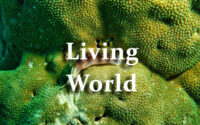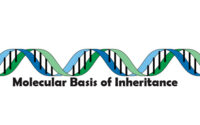Microbes in Human Welfare Questions and Answers
1. Which of the following in sewage treatment removes suspended solids?
A. Tertiary treatment
B. Secondary treatment
C. Primary treatment
D. Sludge treatment
2. Which of the following is correctly matched for the product produced by them?
A. Acetobacter aceti : Antibiotics
B. Methanobacterium : Lactic acid
C. Penicillium notatum : Acetic acid
D. Sacchromyces cerevisiae : Ethanol
3. The primitive prokaryotes responsible for the production of biogas from the dung of ruminant animals, include the-
A. Methanogens
B. Eubacteria
C. Halophiles
D. thermoacidophiles
4. Select the incorrect match.
A. Citric acid -Aspergillus niger
B. Streptokinase — Streptococcus
C. Butyric acid— Clostridium acetobutylicum
D. Cyc|osporin—A — Monascus purpureus
5. Which of the following is used as bioinsecticide?
A. Bacillus polymyxa
B. Cylindrospermum licheniforme
C. Phytophthora palmivora
D. Chrysanthemum cinerarifolium
6. Assertion : Curdling is required in the manufacture of cheese.
Reason : Lactic acid bacteria are used for the purpose
A. If both assertion and reason are true and reason is the correct explanation of assertion.
B. If both assertion and reason are true but reason is not the correct explanation of assertion.
C. If assertion is true but reason is false.
D. If both assertion and reason are false.
7. Which of the following microbes is used for the commercial production of ethanol?
A. Clostridium butylicum
B. Trichoderma polysporum
C. Monascus purpureus
D. Saccharomyces Cerevisiae
8. A person admitted to hospital as he had myocardial infarction. A cardiologist injected him ‘streptokinase’, why?
A. It stimulates heart beat
B. It reduces hypertension
C. It acts as clot buster
D. It reduces the level of blood cholesterol.
9. The puffed-up appearance of dough is due to fermentation by bacteria. Identify the gas liberated during the process.
A. Hydrogen sulphide
B. Methane
C. Ammonia
D. Carbon di oxide
10. Identify a micro-organism that can produce biomass of protein.
A. Methylophilus methylotrophus
B. Monoscus purpureas
C. Trichoderma polysporum
D. Aspergillus niger
11. Which one of the following statements is wrong in relation to transgenic Bt cotton plant?
A. Crop yield loss due to attack by Bacillus thuringiensis bacterium is reduced.
B. Crop yield loss due to attack by lepidopteran insect pests is reduced.
C. The use of chemical insecticides in the cotton field is minimised.
D. Better quality cotton is produced.
12. Which one of the following insecticides is of plant origin?
A. Ecdysone
B. Rotenone
C. Parathion
D. Malathion
13. Which of the following antibiotics kill bacterial cells by inhibiting the polymerisation of peptidoglycans-
A. Aminoglycosides
B. Fluoroquinolones
C. Quinine
D. Penicillin
14. Which one of the following organisms is used as biocontrol agent-
A. Bacillus sphaericus
B. Trichoderma viride
C. Bacillus thuringiensis
D. Bacillus subtilis
15. Select the wrong statement-
A. Human insulin is being commercially produced from a transgenic species of Escherichia coli.
B. The genetically modified Bacillus thuringiensis is used as biopesticide on the commercial scale.
C. Human protein, alpha-1-antitrypsin is used to treat emphysema.
D. Bt toxin genes cryIAC control the corn borer.
16. Ernest Chain and Howard Florey’s contribution was-
A. Discovery of streptokinase.
B. Establishment of potential of penicillin as effective drug.
C. Discovery to DNA sequences.
D. Isolating the bacterial plasmid.
17. The microbial biocontrol agent for butterfly caterpillar is-
A. Baccillus thuringiensis
B. Saccharomyces
C. Lactobacillus
D. Cyanobacteria
18. During sewage treatment biogas produced includes-
A. hydrogen sulphide, nitrogen, methane
B. methane, oxygen, hydrogen sulphide
C. methane, hydrogen sulphide, carbon di oxide
D. hydrogen sulphide, methane, sulphur oxide
19. Identify the correct pair of characters of bacterium which is useful in production of methane—
(i) Recyclers of inorganic nutrients
(ii) Present in stomach of cattle
(iii) Obtain energy from sunlight
(iv) Aerobes
A. (i), (iii)
B. (i), (ii)
C. (i), (iv)
D. (iii), (iv)
20. Beer has an alcoholic content-
A. 3-6%
B. 9-12%
C. 40%
D. 60%
21. Which of the following is an example of biological control agents?
A. NAA
B. NPV
C. Nostoc
D. Agent orange
22. During biogas production acetic acid is transformed into final product by the enzyems of—
A. Clostridium
B. Pseudomonas
C. Penicillium
D. Methanobacillus
23. The initial step in preparation of beer is-
A. Malting
B. Carboxylation
C. Clarification
D. Distillation
24. The microbe Pseudomonas denitrificants produces vitamin-
A. K
B. D
C. B2
D. B12
25. Which is not a mycoherbicide?
A. Phytophthora palmivora
B. Xanthomonas sp.
C. Alternaria crassa
D. Fusurium sp.
26. The biological control of agricultural pests, unlike chemical control is—
A. very expensive
B. polluting
C. self perpetuating
D. toxic
27. Yeast is used in the production of —
A. Cheese and butter
B. Citric acid and lactic acid
C. Bread and beer
D. Lipase and pectinase
28. Microbe used for biocontrol of pest butterfly caterpillars is——
A. Saccharomyces cerevisiae
B. Bacillus thuringiensis
C. Streptococcus sp.
D. Trichoderma sp.
29. Fungus used in preparing soy sauce is-
A. Agaricus
B. AspergilIus
C. Penicillium
D. Saccharomyces
30. Which is not a contact poison?
A. DDT
B. BHC
C. Endrin
D. Lead arsenate
31. Association of roots of higher plants and fungi is—
A. Moss
B. Fern
C. Lichen
D. Mycorrhiza
32. A biofertilizer is—
A. Cyanobacterium Anabaena in cavities of Azolla leaves.
B. Symbiotic association of Azotobacter for fixing atomospheric nitrogen.
C. Farmyard manure
D. Green manure
33. In gobar gas, the maximum amount is that of—
A. Propane
B. Methane
C. Butane
D. Carbon dioxide
34. Domestic sewage of large cities-
A. Has very high amount of suspended solids and dissolved salts.
B. When treated in sewage treatment plant does not require aeration.
C. Has high BOD as it contains both aerobic and anaerobic bacteria.
D. Is processed by aerobic and then anaerobic bacteria in secondary treatment in sewage treatment plant.
35. During cellulose fermentation by anaerobic bacteria in rumen and reticulum, cellulose is mainly changed into—
A. CO2
B. Ethyl alcohol
C. Lactic acid
D. Volatile fatty acids
36. identify two correct statements from the following—
(i) Rennin is industrially produced by Mucor pusilus
(ii) Streptokinase is industrially produced by Pseudomonas pudica.
(iii) Alkaline serine protease is produced by Bacillus licheniformis.
(iv) DNA polymerase is produced by Trichoderma reesi
A. i and ii
B. i and iii
C. ii and iii
D. ii and iv
37. Which is a wrong matching-
A. Yeast—statins
B. Acetobacter aceti—Acetic acid
C. Aspergillus niger—Citric acid
D. Clostridium butylicum—Lactic acid
38. Which one is not a biofertilizer?
A. Nostoc
B. Mycorrhiza
C. Agrobacterium
D. Rhizobium
39. Which of the following is mainly produced by the activity of anaerobic bacteria on sewage-
A. Laughing gas
B. Marsh gas
C. Mustard gas
D. Propane
40. Secondary sewage treatment is mainly a-
A. chemical process
B. Mechanical process
C. Biological process
D. Physical process
41. Continuous addition of sugar in ‘fed batch‘ fermentation is done to—
A. Purify enzymes
B. Degrade sewage
C. Produce methane
D. Obtain antibiotics
42. Which is a fungicide?
A. DDT
B. Bordeaux mixture
C. 2, 4-D
D. DCMU
43. Which is incorrect about fermentation-
A. Toddy is prepared by fermenting palm sap.
B. Propionibacterium is used in fermentation of cheese.
C. Pulled up appearance of dough is due to production of CO2.
D. Fermentation in muscles produces alcohol.
44. Fleming, chain and Florey weer awarded Nobel Prize in 1945 for the discovery of—
A. HIV
B. CT scan
C. Penicillium
D. Staphylococcus
45. Which among these are produced by distillation of fermented broth—
(A) Whisky (B) Wine (C) Beer (D) Rum (E) Brandy
A. B and C alone
B. A and B alone
C. A, D and E alone
D. C and D alone
46. The process of increasing fertility of soil by Earthworms is—
A. Worm casting
B. Vermicomposting
C. Compost bedding
D. None of the above
47. A peculiar odour that occurs in marshy areas and cowsheds is due to gas produced by-
A. Cyanobacteria
B. Archaebacteria
C. Mycoplasma
D. Slime Moulds
48. Which one among the following components of vermicompost contains plant growth factors—
A. Microbes
B. Humic acid
C. Nitrogen
D. Phosphorus
49. Vermicompost is ecofriendly because-
A. Earthworms consume less fodd and produce vermicompost.
B. Earthworms consume left overs and produce vermicompost.
C. Earthworms consume microbes and vermicompost is microbe free.
D. Vermicompost does not alter soil quality unlike synthetic fertilizers.
50. When domestic sewage mixes with river water-
A. small animals like rats will die after drinking river water.
B. the increased mirobial activity releases micronutrients such as iron.
C. the increased microbial activity uses up dissolved oxygen.
D. the river water is still suitable for drinking as impurities are only about 0.1%.
51. Select the correct statement from the following—
A. Biogas is produced by the activity of aerobic bacteria on animal waste.
B. Methanobacterium is an aerobic bacterium found in rumen of cattle.
C. Biogas, commonly called gobar gas, is pure methane.
D. Activated sludge-sediment in settlement tanks of sewage treatment plant is rich source of aerobic bacteria.
52. Leguminous plants are able to fix atmospheric nitrogen through symbiotic activity. Which is not correct?
A. Leghaemoglobin scavanges oxygen and is pinkish in colour.
B. Nitrogenase is insensitive to oxygen.
C. Nodules act as sites for nitrogen fixation.
D. The enzyme nitrogenase catalyses the conversion of atmospheric nitrogen to ammonia.
53. An example of endomycorrhiza is—
A. Glomus
B. Agaricus
C. Nostoc
D. Rhizobium
54. Which of the following is not used in organic farming?
A. Earthworm
B. Oscillatoria
C. Snail
D. Glomus



